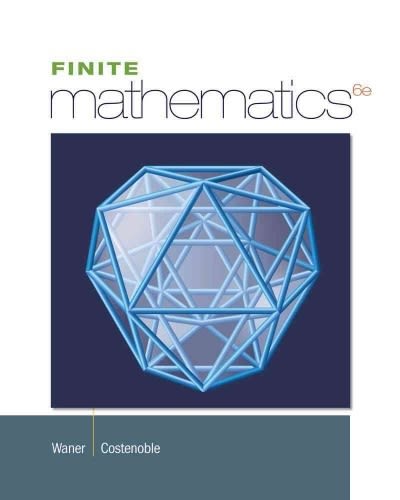Question
New Assignment. Need some help and direction please. This is the scenario: Numerous accounts suggest that for many animals, including humans, direct stare from another
New Assignment. Need some help and direction please.
This is the scenario:
Numerous accounts suggest that for many animals, including humans, direct stare from another animal is aversive (e.g. Cook 1977). Some insects, such as moths, have even developed eye-spot patterns on the wings of body to ward off predators (mostly birds) who may have a natural fear of eyes (Blest, 1957). Suppose that a comparative psychologist wants to know whether the birds that feed on these insects show an avoidance of eye-spot pattern.
The researcher performed the following experiment: A sample of 30 moth eating birds is selected. The animals are tested in an apparatus that consist of a two-chambered box. The birds are free to roam from one side of the box to the other through a doorway in the partition that separates the two chambers. In one chamber, there are two eye-spot patterns painted on the wall. The other side of the box has plain walls. One at a time, the researcher test each bird by placing it in the doorway between the chambers. Each bird is left in the apparatus for 60 minutes, and the amount of time spent in the plain chamber is recorded.
To find out whether the birds show an avoidance of eye-spot pattern (i.e. spend less time in the chamber with the eye-spot patterns on the wall than in the chamber with no eye-spot patterns on the wall), you will need to examine whether the birds' looking behaviors differed from chance (i.e. the population mean) using the data set the data provided. The values in the "Proportion_eye_spot"" column present the proportion of time the birds spent in the chamber with the eye-spot patterns painted on the wall.
Questiuon please. Can you please validate if my approach is correct?
1. H0= There is no difference in the time spent in the two different chambers. (Ho = Eye-spot Chamber = Plain Chamber)
H1= There is a difference in the time spent in the two different chambers (H1 Eye-spot Chamber Plain Chamber)
the data I received only has the time the birds spent time in the eye spot chamber, so I created another column assuming for the plain room
then I conducted a paired sample t-test
Paired Samples T-Test
| Paired Samples T-Test | |||||||||||||||
|---|---|---|---|---|---|---|---|---|---|---|---|---|---|---|---|
| statistic | df | p | Mean difference | SE difference | |||||||||||
| eye-spot chamber | plain chamber | Student's t | -3.41 | 29.0 | 0.002 | -0.228 | 0.0670 | ||||||||
| Descriptives | |||||||||||
|---|---|---|---|---|---|---|---|---|---|---|---|
| N | Mean | Median | SD | SE | |||||||
| eye-spot chamber | 30 | 0.386 | 0.319 | 0.183 | 0.0335 | ||||||
| plain chamber | 30 | 0.614 | 0.681 | 0.183 | 0.0335 | ||||||
how do I interpret the t-statsitc?
Step by Step Solution
There are 3 Steps involved in it
Step: 1

Get Instant Access to Expert-Tailored Solutions
See step-by-step solutions with expert insights and AI powered tools for academic success
Step: 2

Step: 3

Ace Your Homework with AI
Get the answers you need in no time with our AI-driven, step-by-step assistance
Get Started


